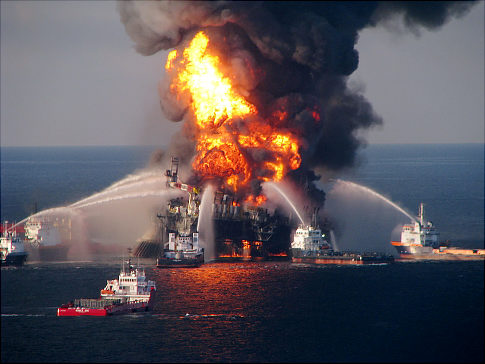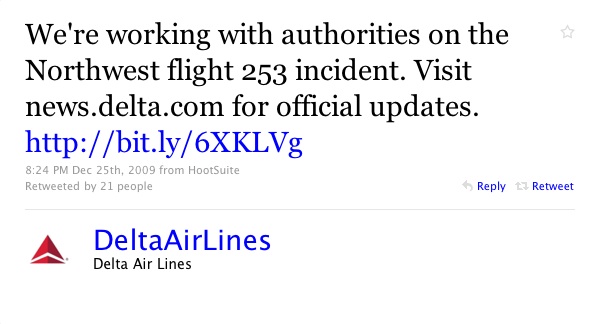Two years ago yesterday BP CEO Tony Hayward inadvertently got his wish when, in the thick of the Deepwater Horizon disaster, he told a press conference, “I want my life back.” He was sacked soon thereafter. In the battle for public opinion – for trust, support, the benefit of the doubt – Hayward lost. It was a failure of leadership on a massive scale. And it began with a failure of communication. And that failure, in turn, was a failure of discipline.
Hayward’s blunder is not unique to him. It should be a wakeup call to CEOs and other leaders, to all whose leadership responsibilities require inspiring trust and confidence verbally.
Whatever else leadership may be, it is experienced publicly. While it may emanate from within, it is a public phenomenon. And however technically proficient someone may be, if her or she does not communicate effectively, he or she will not lead well. Communication has power. But as with any form of power, it needs to be harnessed effectively or it can all too often backfire.
In 33 years of advising leaders on the actions and communication needed to win, keep, or restore public confidence, I have concluded that many leaders, much of the time, fundamentally misunderstand communication. This misunderstanding has consequences: corporations lose competitive advantage; NGOs find it harder to fulfill their mission; religious denominations lose the trust and confidence of their followers; nations diminish their ability to protect citizens and achieve national security goals.

Today SmartBlog on Leadership published an excerpt from The Power of Communication: Skills to Build Trust, Inspire Loyalty, and Lead Effectively, starting with Mr. Hayward’s blunder, and moving from there.
The full excerpt is published below.
General Management, Inspiring Others
Guest Blogger
Leadership communication isn’t about saying things; it’s about taking change seriously
By Helio Fred Garcia on June 1st, 2012
Tony Hayward, then CEO of BP, told the media in 2010 that he wanted his life back. He got it, but not in the way he intended. His quote was part of an ineffective attempt to show he cared about the consequences of the Deepwater Horizon rig explosion.
The full quote: “I’m sorry. We’re sorry for the massive disruption it’s caused their lives. And you know we’re — there’s no one who wants this thing over more than I do. You know, I’d like my life back.” But the back end got all of the attention. He had stepped on his message.
It was the beginning of the end for Hayward. He was out of a job a few months later, having lost the trust and confidence of those who mattered to him. His blunder was a failure of leadership on a massive scale. And it began with a failure of communication. And that failure, in turn, was a failure of discipline.
A burden of leadership is to be good at communicating. If you can’t communicate effectively, you will not lead. But there’s a paradox: Unlike most other skills a leader needs to master, communication seems to be something leaders already know; they’ve been communicating their whole lives. So leaders often are unaware of their communication abilities, or lack thereof, until it’s too late.
Harnessing the power of communication is a fundamental leadership discipline. Effective leaders see communication as a critical professional aptitude and work hard at getting it right. And getting it right requires becoming strategic as a first resort: thinking through the desired change in the audience and ways to make that happen. And then making it happen.
Effective communicators take change seriously: They ground their work in moving people to be different, think differently, feel differently, know or do things differently. Effective communicators also take the audience seriously. They work hard to ensure that all engagement moves people toward their goal. That means caring about what the audience thinks and feels and what it will take to get the audience to think and feel something else. It means listening carefully to the reaction, adapting where needed and not saying things that suggest they care only about themselves (I want my life back!).
Effective communicators also take words seriously. They know that words trigger world views and provoke reaction. They plan engagement so the right words are used to trigger the right reaction. Effective communicators also know that the best communication can be counterproductive if it isn’t aligned with action. And effective communicators take seriously the need to package all that an audience experiences — verbal, visual, abstract and physical — into one powerful experience.
The Discipline of Effective Leadership Communication
Six questions to ask before communicating
Effective leadership communication never begins with “What do we want to say?” but rather with a sequence of questions. An effective communicator always begins by asking questions in a certain sequence.
- What do we have? What is the challenge or opportunity we are hoping to address?
- What do we want? What’s our goal? Communication is merely the continuation of business by other means. We shouldn’t communicate unless we know what we’re trying to accomplish.
- Who matters? What stakeholders matter to us? What do we know about them? What further information do we need to get about them? What are the barriers to their receptivity to us, and how do we overcome those barriers?
- What do we need them to think, feel, know or do to accomplish our goal?
- What do they need to see us do, hear us say or hear others say about us to think, feel, know and do what we want them to?
- How do we make that happen?










